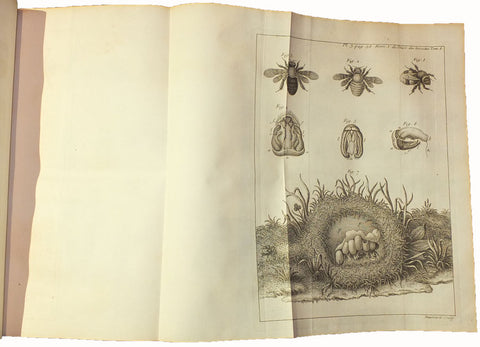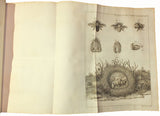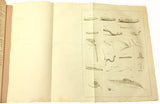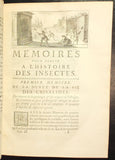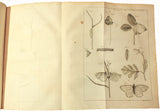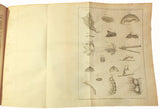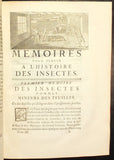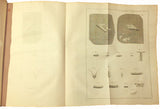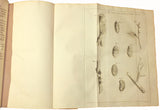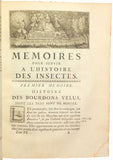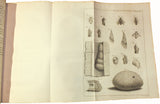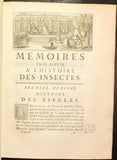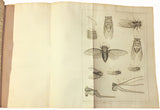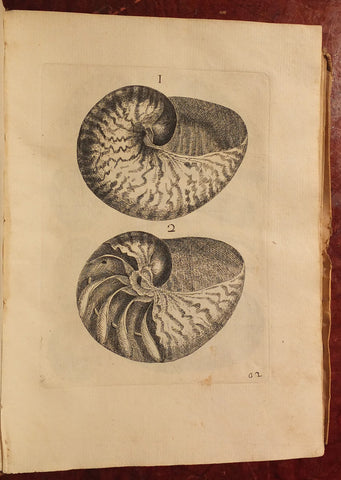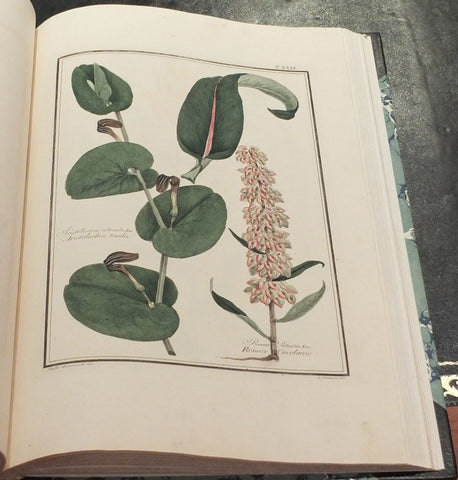René Antoine Ferchault de Réaumur (1683-5717), Memoires pour servir a l’Histoire des Insectes
René Antoine Ferchault de Réaumur (1683-5717)
Memoires pour servir a l’Histoire des Insectes
Paris: l’Imprimerie Royale, 1734-1742
6 volumes. 4to., (10 x 7 ¾ inches). 267 fine folding engraved plates; 6 fine engraved headpieces; 6 fine engraved initials at the start of chapter 1 of each volume (one or two wormholes). Contemporary brown mottled calf, the spine in six compartments separated by five raised bands with red morocco gilt lettering piece in one and gilt decorated in the rest (lightly worn).
Provenance: With contemporary armorial bookplate to front pastedowns (in volume 4 it was removed).
“RÉAMUR’S GREATEST WORK IN NATURAL HISTORY” (DSB)
First edition. EXTREMELY FINE COPY, with lovely contemporary mottled calf binding. Réaumur was a French polymath who contributed to many branches of science, initially studying mathematics and physics. His discoveries regarding iron and steel awarded him a pension, but he donated the funds to the Académie des Sciences to further research in improving industrial processes. From there he moved onto meteorology, and invited a thermometer scale that bears his name. He produced extensive writings on natural history, and proved that crustaceans regenerate lost limbs. In 1710 he wrote a paper on the possibility of spiders being used to produce silk, which was so celebrated at the time that the Kangxi Emperor of China had it translated into Chinese.
Perhaps his greatest work is the present one, Memoires pour server a l’Histoire des Insectes, published between 1734 and 1742. Initially envisioned in 10 parts, the project was halted after the completion of 6, perhaps due to the author’s jealous rivalry with his younger and more popular contemporary Buffon. A supplement was posthumously published in 1928. “It describes the appearance, habits, and locality of all the known insects excepting the beetles” (Garrison-Morton). In addition to examining insect behavior, Réaumur also examined the economic value of insect-produced materials such as silk, honey, wax, lacquer, and dye. He also studied pest control. This work is lauded as “in fact one of the most monumental works written in this field of research” (Nordenskjöld, History of Biology, p. 231).
“A CLASSIC IN THE LIFE, HISTORY AND BIONOMICS OF INSECTS” (Sparrow)
“He seemed fascinated about all with insect behavior, obviously admiring the industry, diligence, ingenuity, organization, and skill of those small creatures… Réaumur, in short, was a pioneer in applied entomological research… His descriptions were minute and exacting in every detail, and his experiments were among the most ingenious he ever contrived… Réaumur’s reserches were extensive and original… He made some of the first tentative studies of communication among the bees” (DSB 11, p. 331). Cobres 366, 11. Hagen II, 64, 7. Horn-Schenkling 17767. Nissen 3315. Garrison-Morton 304. Dibner 192. Sparrow 169. Bernard 173. Eales I, 1209. Hoefer XLI, 796. Norman 1804. Wellcome IV p. 484.
We Also Recommend

